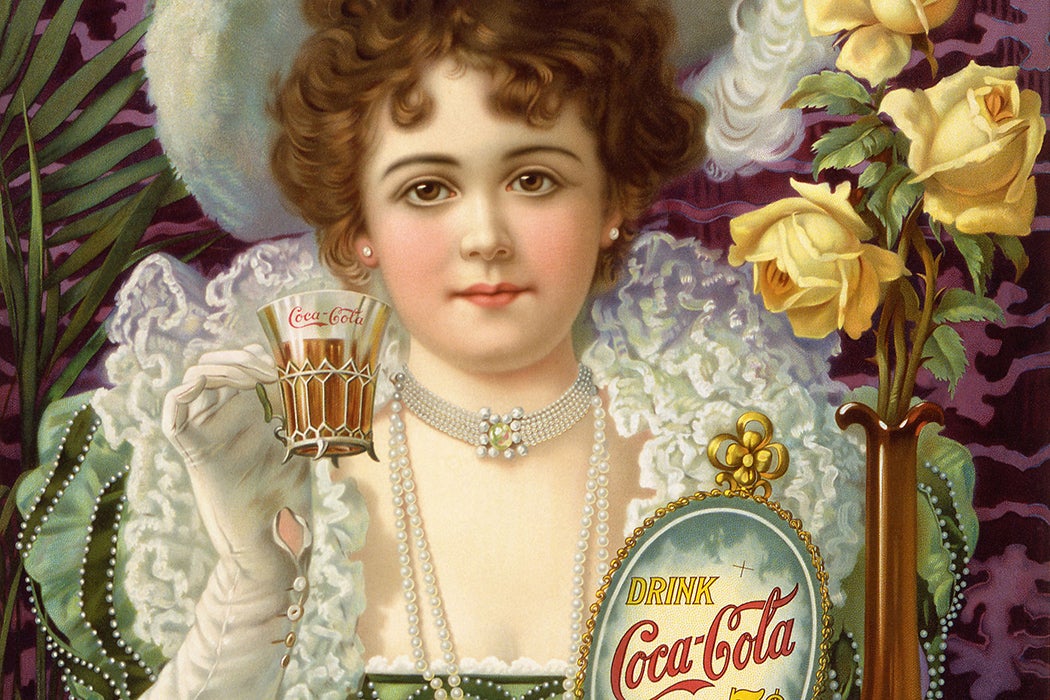We all know that Coca-Cola once contained cocaine. But why? And why did they take it out? As Michael M. Cohen writes, the answer is all about the way authorities perceive drugs differently depending on the race and class of the people using them.
Cohen writes that Coke was the brainchild of Dr. John Stith Pemberton, who was injured while fighting for the Confederacy and then became addicted to the morphine prescribed for pain relief. Living in Atlanta after the war, the physician tried the new wonder drug cocaine and found it cured his morphine problem. Like many other medical professionals of his time, he identified cocaine as a safe solution to conditions including the “nervousness” that plagued the white middle class—not to mention impotence and sexual dysfunction.
In 1884, Pemberton began selling cocaine-laced wine. After Atlanta passed a temperance law the next year, he switched gears and started producing a soft drink named for its two key medicinal ingredients—coca leaf and the caffeine-containing African kola nut. Coca-Cola was an immediate hit at soda fountains, a space catering to middle-class white customers. After Pemberton’s death in 1888, the brand continued to grow under the leadership of his business partner, Asa Grigs Candler.
But, Cohen writes, within just a decade, public attitudes regarding cocaine changed dramatically. This had everything to do with the drug’s adoption by the southern Black working class. Around the time Candler assumed control of Coca-Cola, Black laborers in the New Orleans area began using cocaine to help them get through long, hard days of physical work. Cocaine use spread to workers at plantations and in urban areas around the South. It also became a popular recreational drug in Black and mixed-race neighborhoods.
While the medical profession had seen nothing wrong with tonics such as Coca-Cola advertising themselves to white, middle-class consumers for their aphrodisiac qualities, it became an entirely different matter when Black people used cocaine. Medical journals warned of the “Negro cocaine menace.” Newspapers claimed that the drug caused Black men to commit crimes—most notably, raping white women.
Cohen writes that Candler fought back against the damage that cocaine’s declining reputation did to his brand’s reputation, arguing that the small quantity of coca extract in Coke was merely energizing. He also leaned into an emphasis on the soda as a “refreshing” and “great tasting” drink, downplaying its supposed medicinal qualities.
Weekly Newsletter
But this strategy became less tenable in 1899, when the company expanded its sales of bottled coke to a national market. This meant that Coca-Cola was now available outside white soda fountains to anyone with a nickel to spare—including Black men.
In 1901, the Atlanta Constitution linked the dangers of Black cocaine use to soft drinks containing the drug, which it claimed could “unconsciously cultivate” a drug habit. That same year, Candler called for a change to the Coca-Cola formula, replacing cocaine with heavier doses of sugar and caffeine—and started denying that the soda had ever contained cocaine to begin with.
Support JSTOR Daily! Join our membership program on Patreon today.







